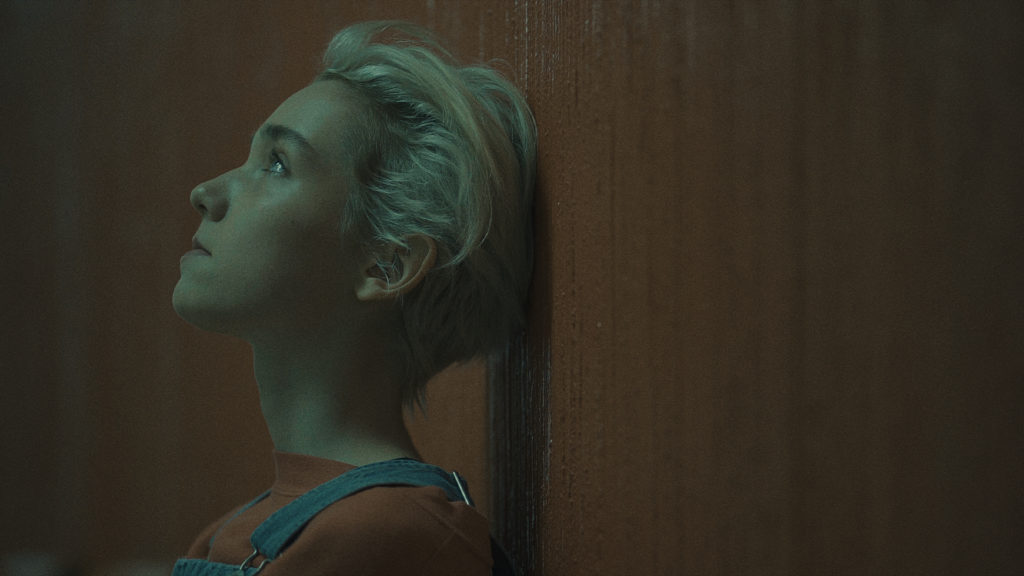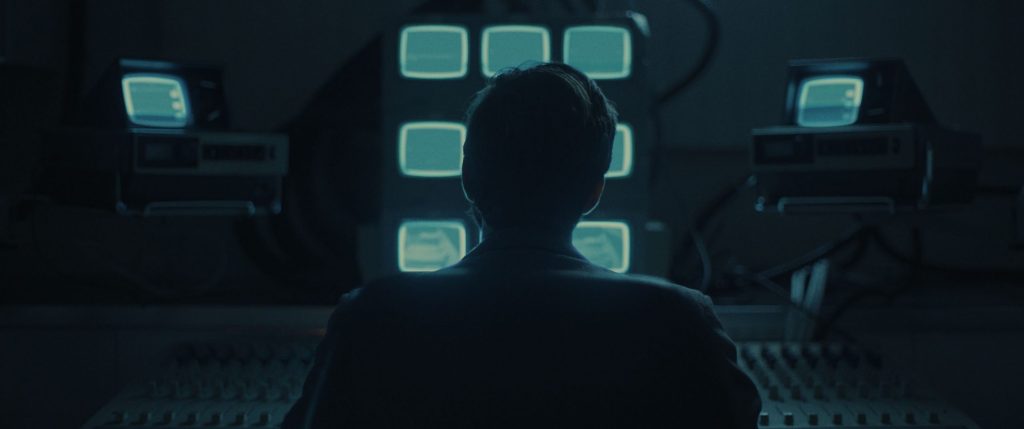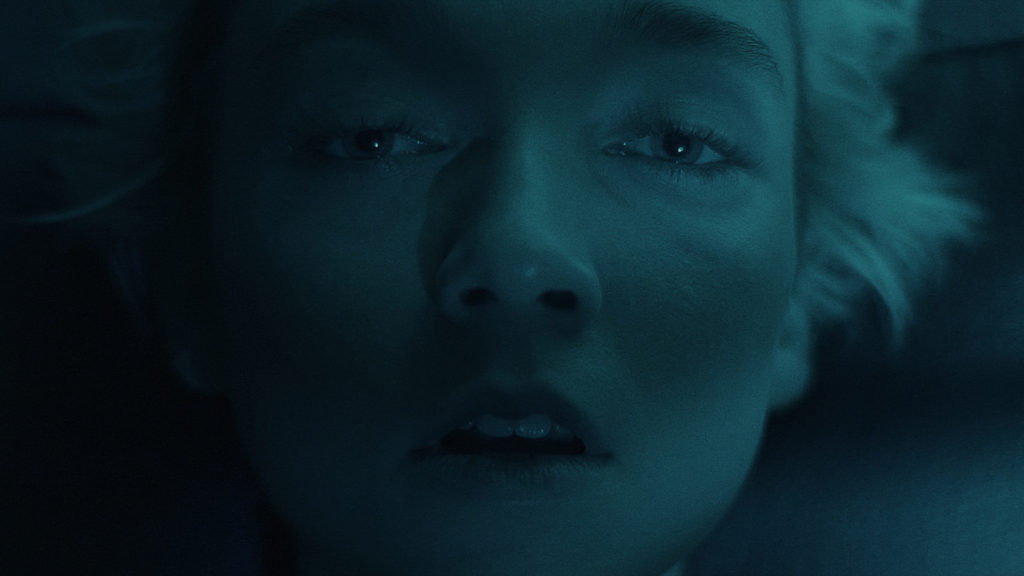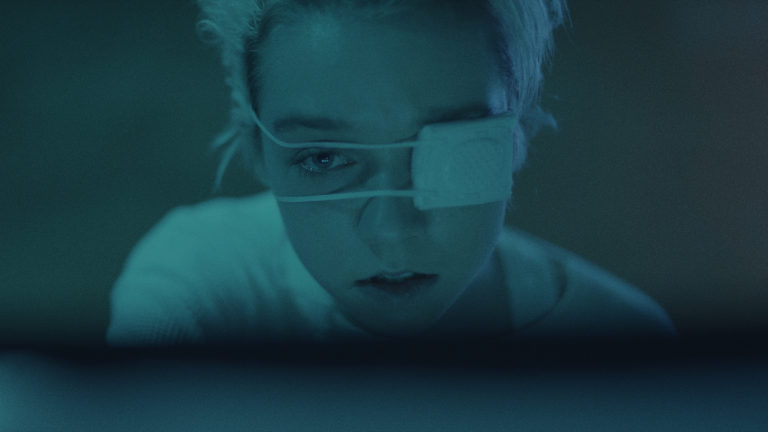Come True is a waking nightmare that blurs the line between dreams and reality before regrettably getting lost in its own descent.
That descent goes from intriguingly ominous to aggressively uninteresting so thoroughly that it almost entirely erases the initially enthralling journey it took to get there. Almost, but thankfully not entirely. The film conjures a world that is as mysterious as it is darkly unnerving, which makes it all the more tragic that the entire structure completely collapses around itself.
There is much to love about the film’s beginning. It is both humble and haunting, delicately drawing us into a world that becomes increasingly sinister. Sarah, a teenage runaway played by an enigmatic Julia Sarah Stone, is having a hard time sleeping. She is first seen staying in a park and while it is never made explicit why she won’t return home, there is a persistent feeling that she feels safer anywhere else. Her situation remains untenable and she needs to find a more permanent solution.

Sarah’s future looks increasingly dire. She has to rest, but can’t manage forever by staying at her friend’s house or sleeping on the slide at the park with her bike chained nearby. Could a promising opportunity in the form of a sleep study where she can get paid in addition to having a place to sleep finally be a change of fortune? It quickly becomes clear that it is all too good to be true as there are ulterior motives being kept from participants. The study is not just about sleep, but about dreams.
That is where the film does a fantastic job at capturing the feeling of the dream space. Sarah has been having a recurring nightmare that is only getting more and more horrifying. What remains constant is a figure cast in shadow where her dream always ends. Although similar in execution, the imagery is consistently well constructed and deeply unnerving. When mixed with an unsettling ambient score it all comes together perfectly. Even as the figure becomes more and more real, the film still manages to keep it shrouded in mystery.
That mystery extends beyond the dreams as the people running the sleep study are persistently tight lipped. All attempts by Sarah to ask questions about what they are looking for go largely nowhere. The audience is shown glimpses of television screens and images captured from her dreams, though she remains almost entirely in the dark. Stone is able to compellingly convey the hunger for answers that she is struggling to get. That is, until she meets Jeremy.

Jeremy, Landon Liboiron, is a research assistant on the study who soon begins to form a strained, bordering on unethical, relationship with Sarah. Jeremy is first seen following Sarah who is unaware that he is helping to oversee the study. When Sarah discovers his role, she strongly confronts Jeremy about it. The scene is an important one, seemingly built to set up conflict around the ethics of the study. The film even gestures towards ideas about gender and power, seemingly to establish some more complicated sequence of events to come.
Instead, it all frustratingly goes nowhere.
It is a classic example of lampshading, a concept where a film will call attention to a behavior to acknowledge it as being out of place but in a way that primarily seeks to avoid criticism. Jeremy never apologies and instead just sits in silence until the scene ends. He does reveal some information, though is still obscenely obtuse when a simple, straightforward answer would move the film along when it desperately needed to. As their relationship develops, it becomes clear there was never really any intent to see the ideas in this scene through. The film nearly entirely jettisons all the compelling threads it had previously established.
The film was consistently dropping hints about some deeper revelations about the nature of Sarah’s dreams. A reference to a particular Philip K. Dick novel and a brief glimpse of Night of the Living Dead, all hint at something deeper especially as Sarah’s dreams of the figure get increasingly complex. Sometimes a doorway is just a door, sometimes it is in the sky, sometimes it resembles hands. The figure will occasionally get clearer and change form. Despite these intriguing threads, the film just doesn’t go anywhere remotely interesting and actively undercuts its previous prior investments.

It is impossible to fully explain the narrative flaws without revealing how all the pieces come together. In retrospect none of the story actually fits. Nothing comes together in a meaningful way as the film strays far off the path it had established, both literally and figuratively. It reduces Sarah to both a plot device and subsequent vehicle for a shock ending that is not earned. Looking back on a deluge of disconnected scenes and themes, it is clear that there was nowhere to go due to the limitations imposed by its conclusion. The information revealed at the last possible second completely abandons any pretense of having an incisive vision.
If this sounds harsh, it is only because there was so much potential. There is a rich journey being undertaken and Sarah is an interesting character. But rather than reach for something deeper lurking in the nuances of the narrative, the film completely loses its nerve and goes for a superficial conclusion. All the technical achievements and the strong central character can’t overcome the fact that the story just completely falls apart. For a film premised on our deepest dreams coming true, Come True is unwilling and unable to overcome the nightmare of its own narrative construction.
Come True is available on VOD and in theaters beginning March 12. Photo credit: IFC Midnight.




